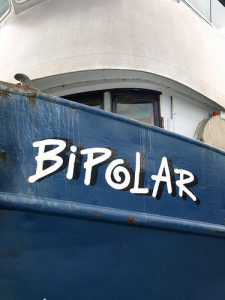Breakdown of the Diagnosis: Bipolar Disorder
The mental health diagnosis Bipolar Disorder has been mentioned on SOVA before. We thought it would be good to provide some information about the diagnosis. Bipolar disorder causes drastic changes in mood, energy, and activity levels as well as the ability to complete daily living tasks. There are four different types of bipolar disorder, but today we are going to focus on the first and second: bipolar I disorder and bipolar II disorder. For this post, we’ll breakdown the symptoms of both bipolar I and bipolar II, as well as the differences between the two. We’ll also talk about the way bipolar disorder relates to anxiety and depression.
Before we dive in, it’s important to note that only a professional can diagnose individuals with mental health disorders. We want to warn against the dangers of self-diagnosis, especially relating to mental illness. If you or someone you know is experiencing some of these symptoms, it’s okay to investigate further by educating yourself on the disorder, but important to get a professional opinion before drawing any conclusions.
Bipolar I disorder is characterized by what the mental health field calls “manic episodes.” A manic episode is a symptom classified by a period of “abnormally and persistently elevated, expansive, or irritable mood and abnormally and persistently increase goal-directed activity or energy” that lasts at least one week. Manic episodes are also characterized by symptoms such as increased self-esteem, decreased need of sleep, racing thoughts, and easily distracted by unimportant things. These are just a few of the symptoms of a manic episode. Additionally, the manic episode in bipolar I disorder is typically so severe that hospitalization is necessary. People who are in the middle of a manic episode might have excessive amounts of energy and feel jumpy or high/elated. During a manic episode, a person might talk very fast about a lot of different subjects or might have difficulty sleeping. Additionally, manic episodes usually result in risky behavior like spending lots of money. Bipolar I disorder can also be classified by a hypomanic episode or a major depressive episode (described below), but a manic episode must be experienced in order to diagnose someone with bipolar I disorder.
Bipolar II disorder is classified by a pattern of “hypomanic episodes” and major depressive episodes (MDE). Hypomanic episodes share a lot of the same features as manic episodes, including the abnormally elevated or irritable mood and increased goal-directed activity or energy. Additionally hypomania is also characterized by increased self-esteem, decreased need of sleep, racing thoughts, and easily distracted by unimportant things. The difference between a hypomanic episode and a manic episode is that the hypomania does not impair the individual’s ability to function in work and social settings and does not require hospitalization. Also, hypomania lasts for at least 4 days in a row. The other classifier for bipolar II disorder is a pattern of major depressive episodes. We’ve talked about some of the symptoms of depression in a blog post found here. A MDE can include impairments in social or work functioning. In summary, Bipolar II disorder includes both hypomanic episodes and major depressive episodes, but not manic episodes.
The difference between bipolar I and bipolar II is that bipolar II lacks the full-blown manic episodes described above. Bipolar disorder can occur along with other mental illnesses, like anxiety disorders. The American Psychological Association found that 75% of people with bipolar I disorder also have an anxiety disorder. The same percentage is found for the population diagnosed with bipolar II disorder. Bipolar disorder is also closely related to depression, in that both types can include an MDE.
To learn more about Bipolar Disorder, check out the National Institute of Mental Health (NIMH). A lot of the information from this post came from NIMH and the American Psychiatric Association’s book the Diagnostic and Statistical Manual of Mental Disorders (DSM-5)





Recent Comments